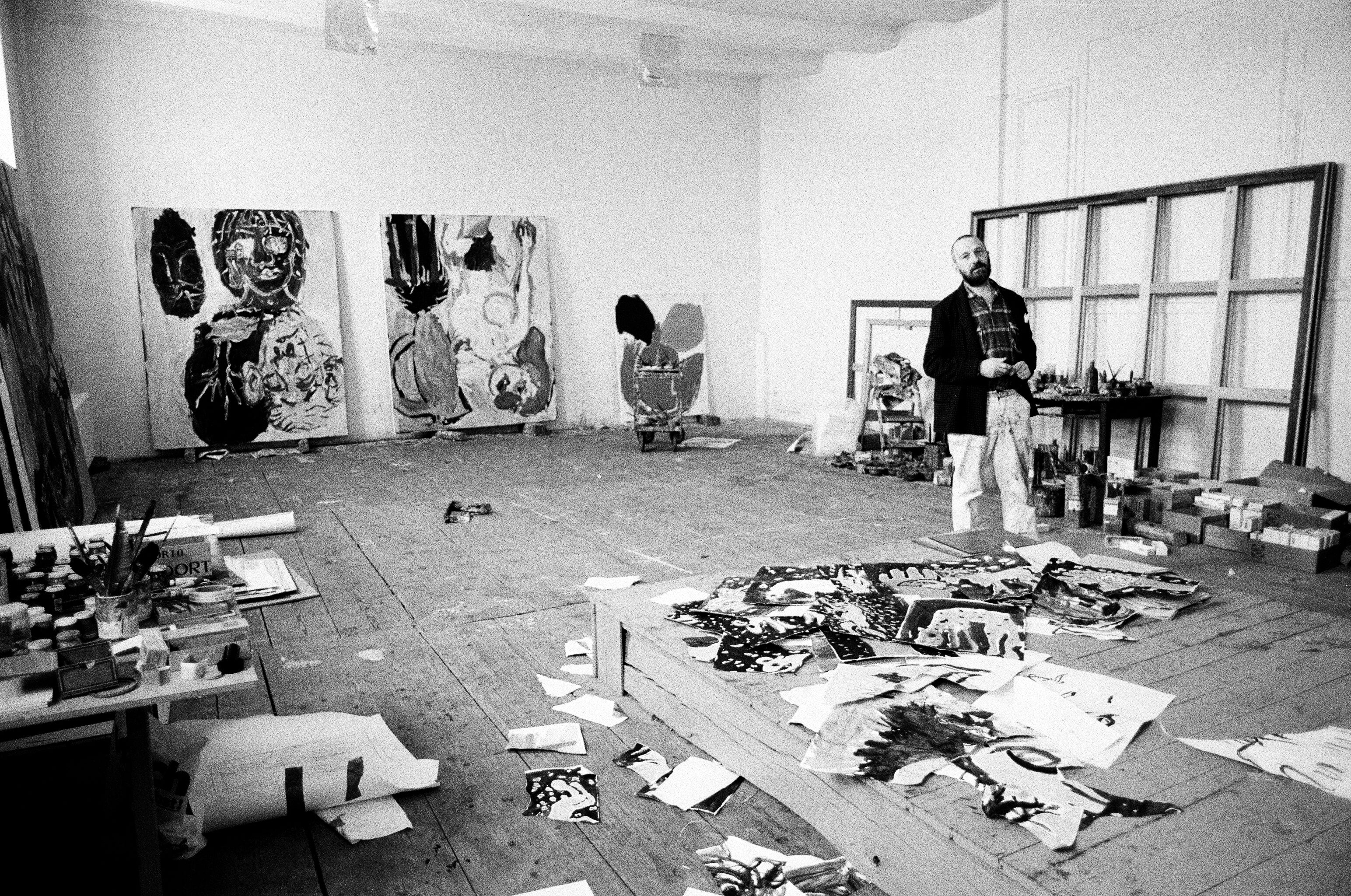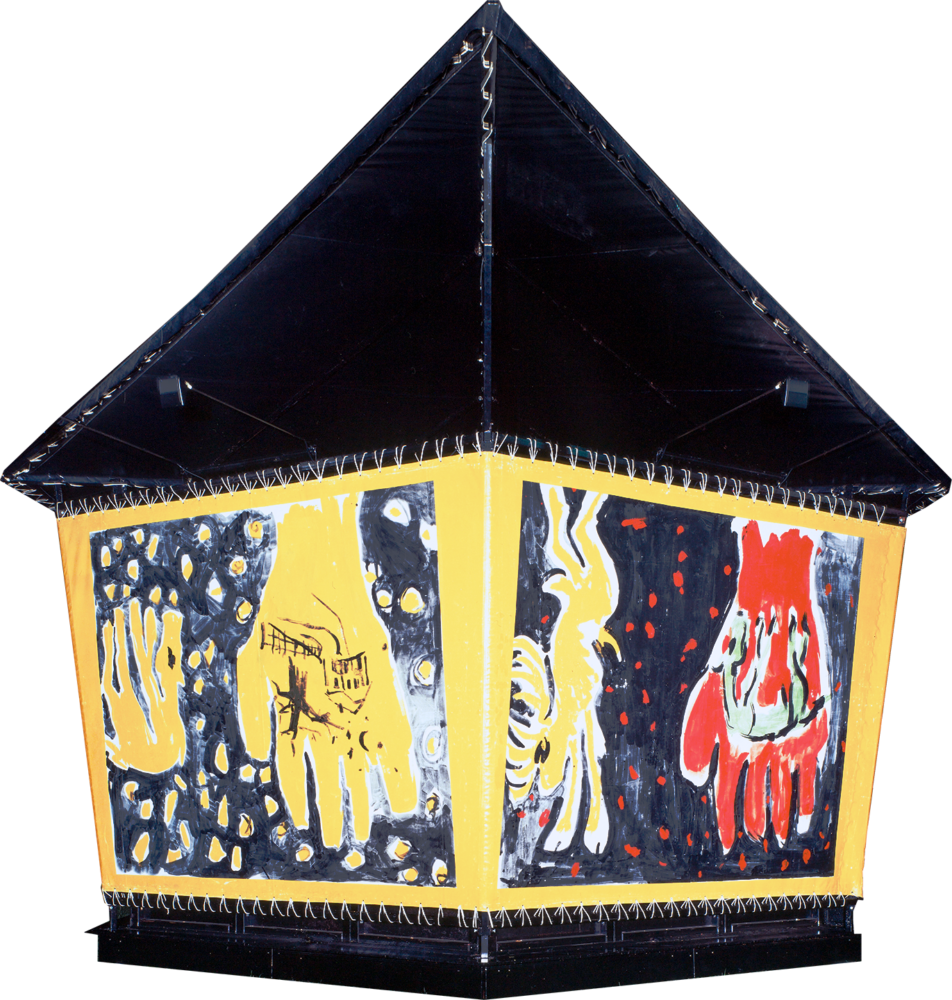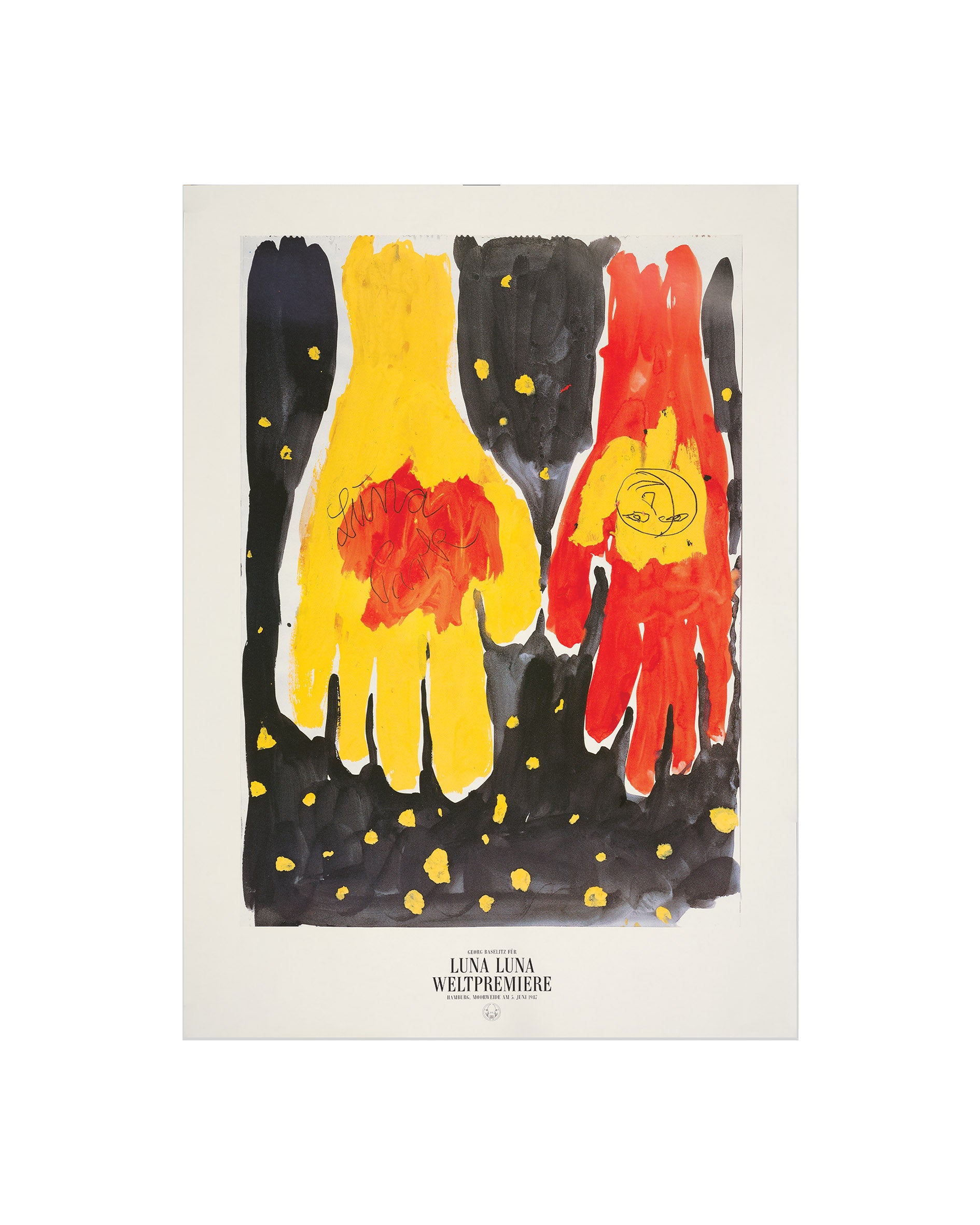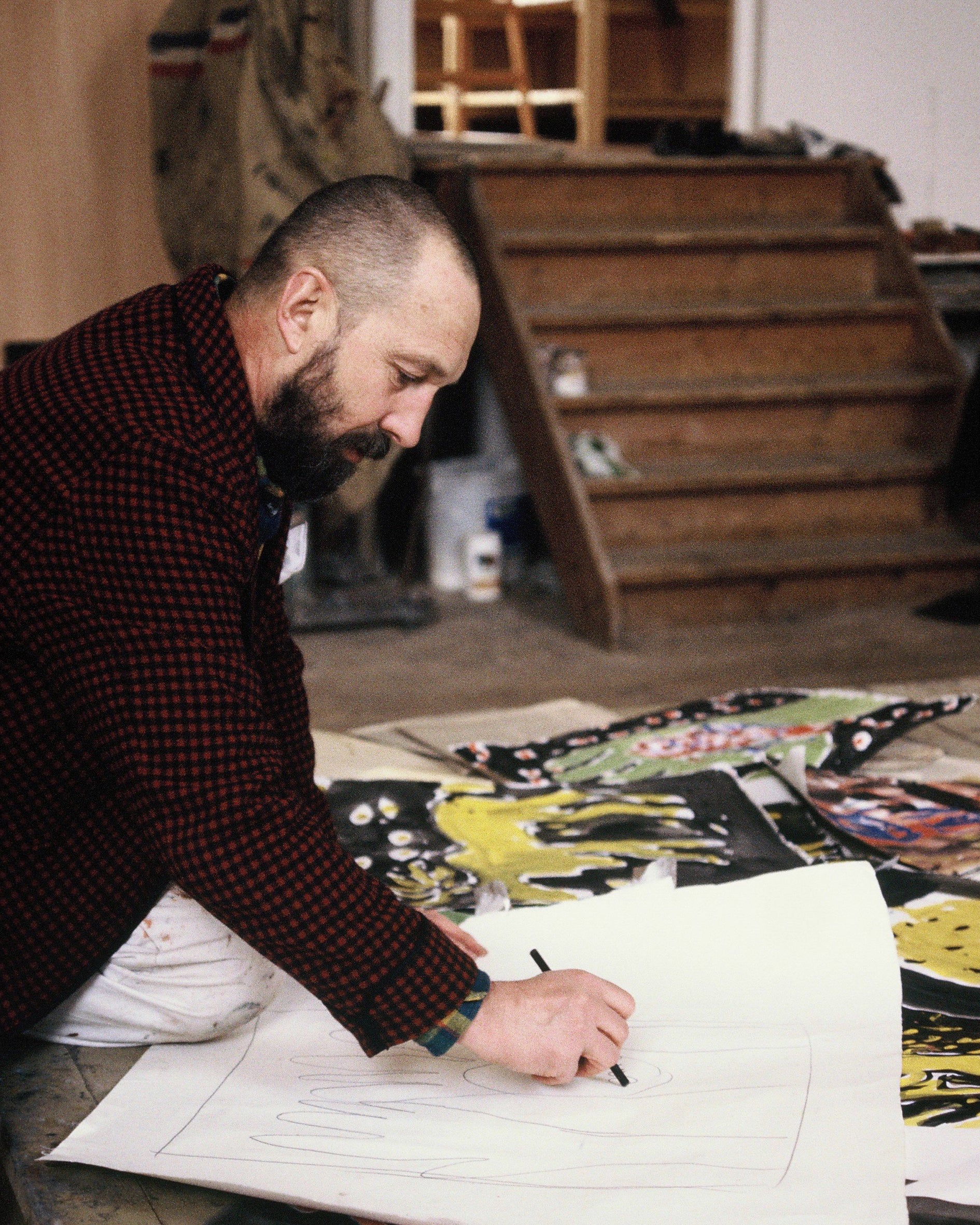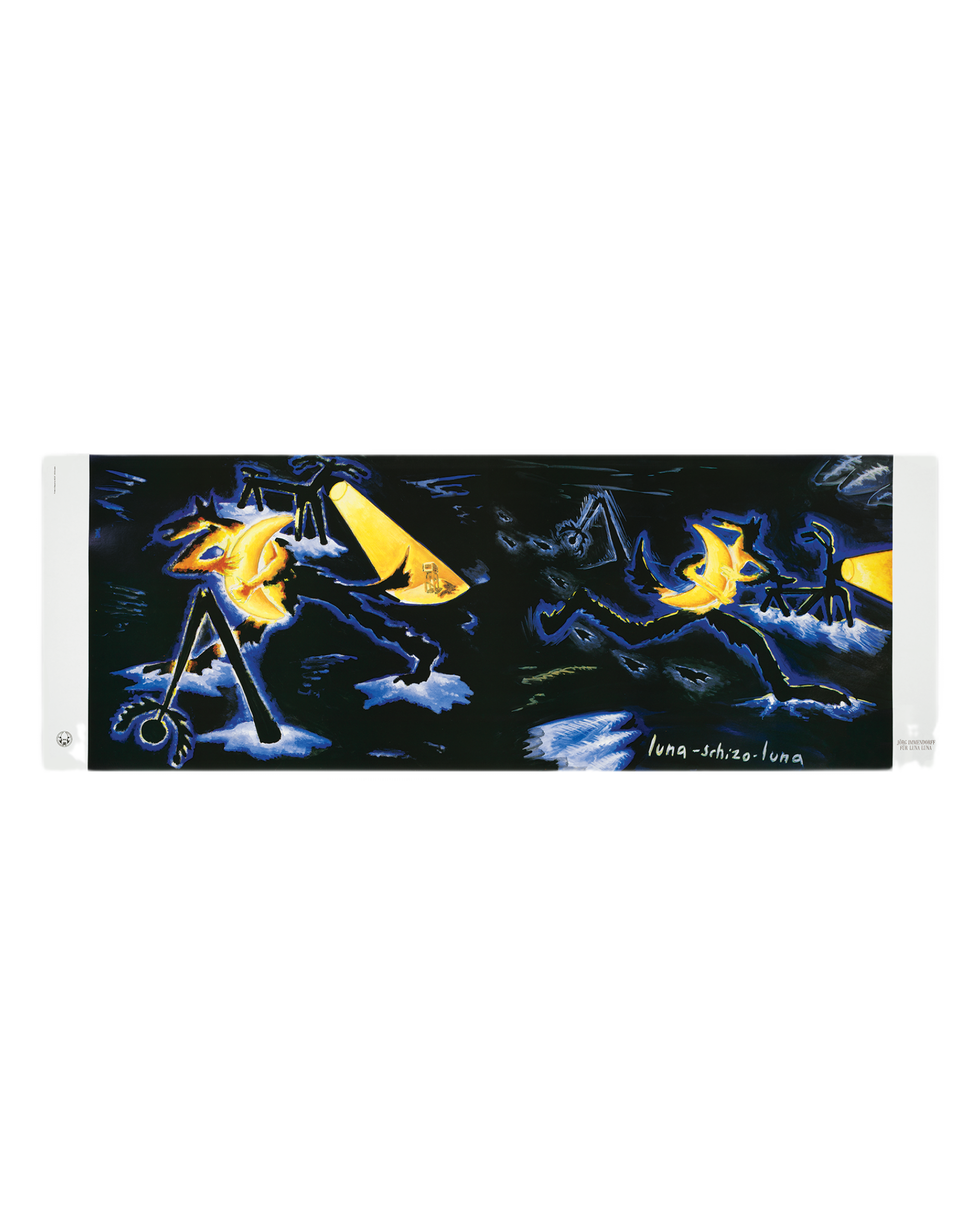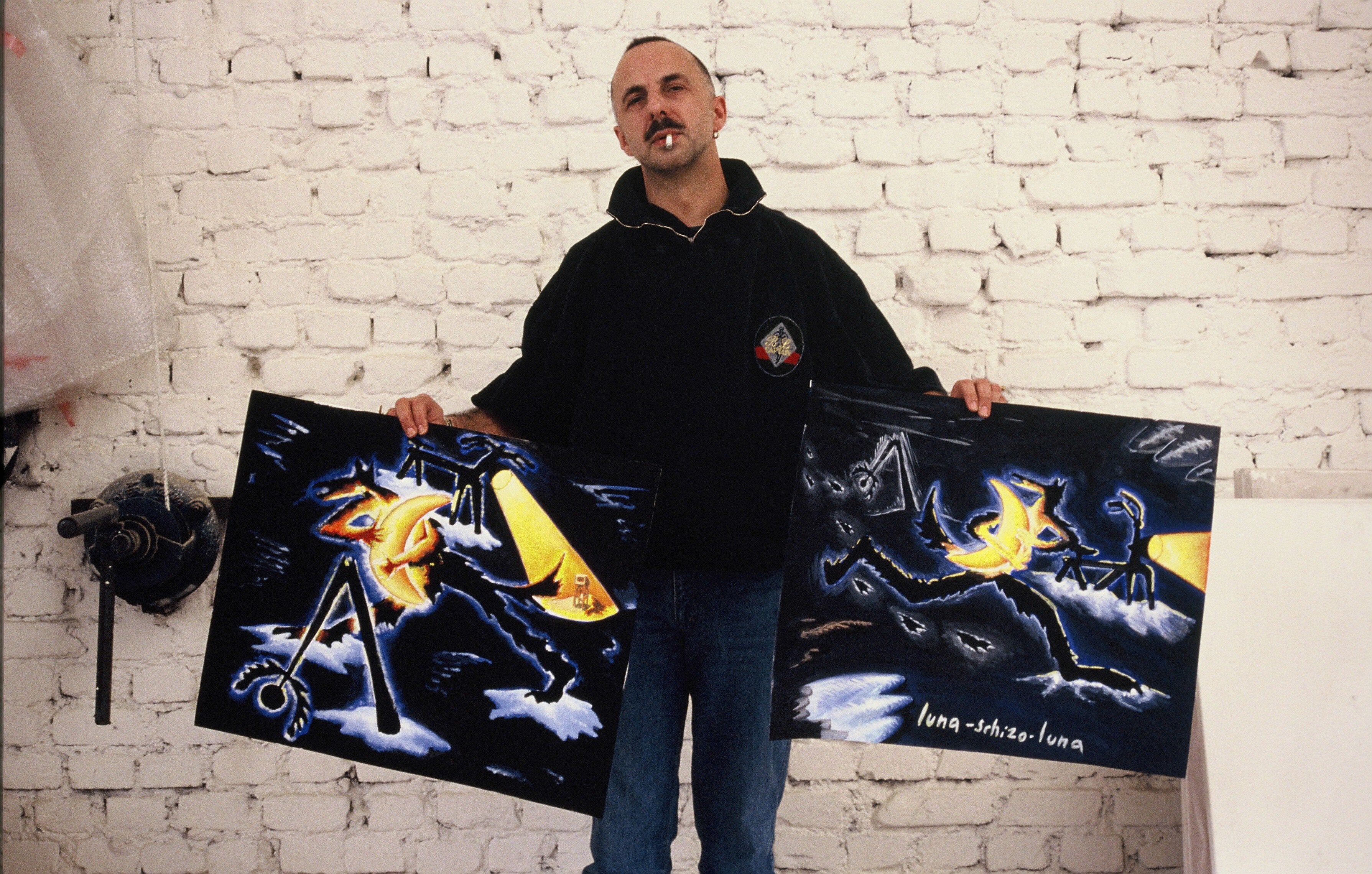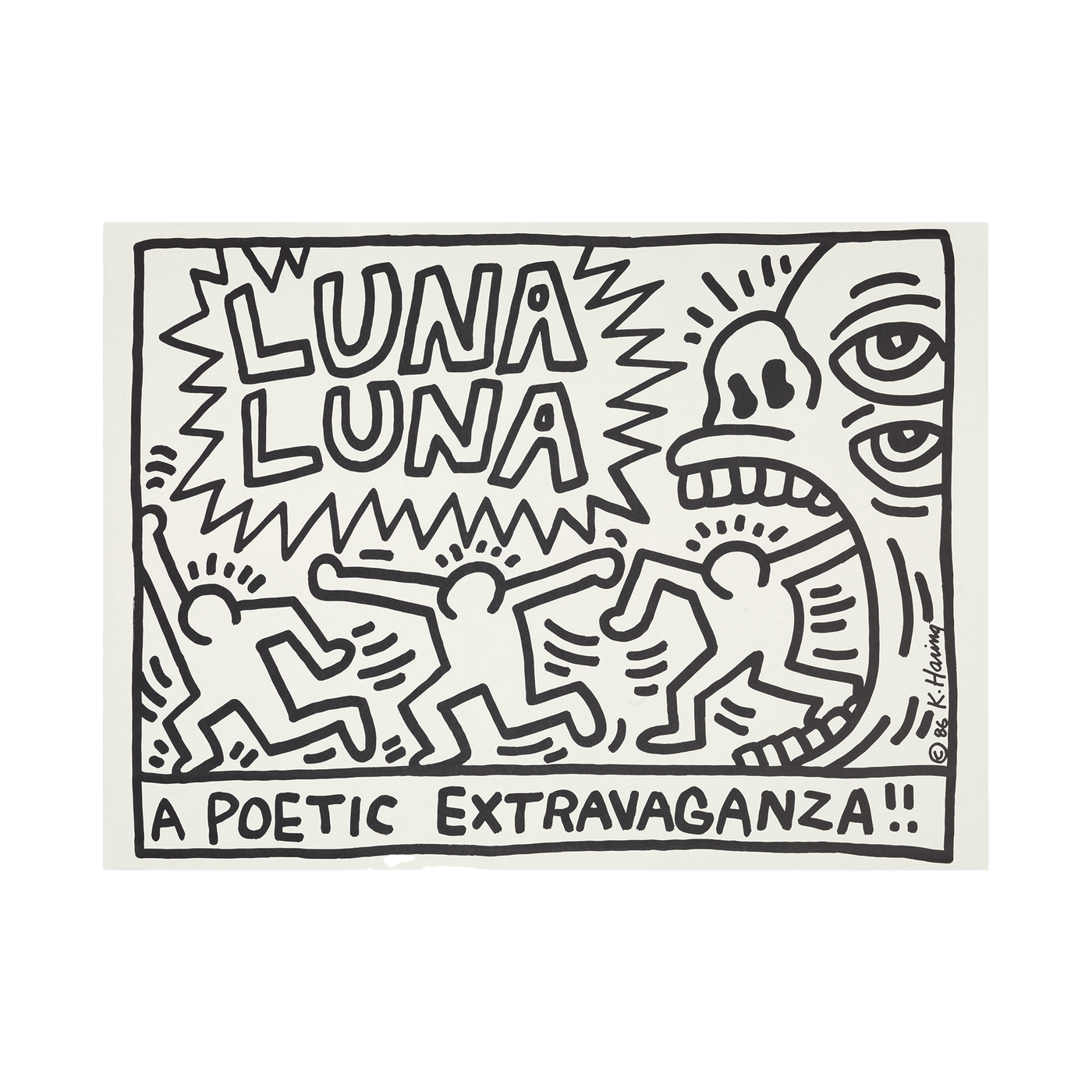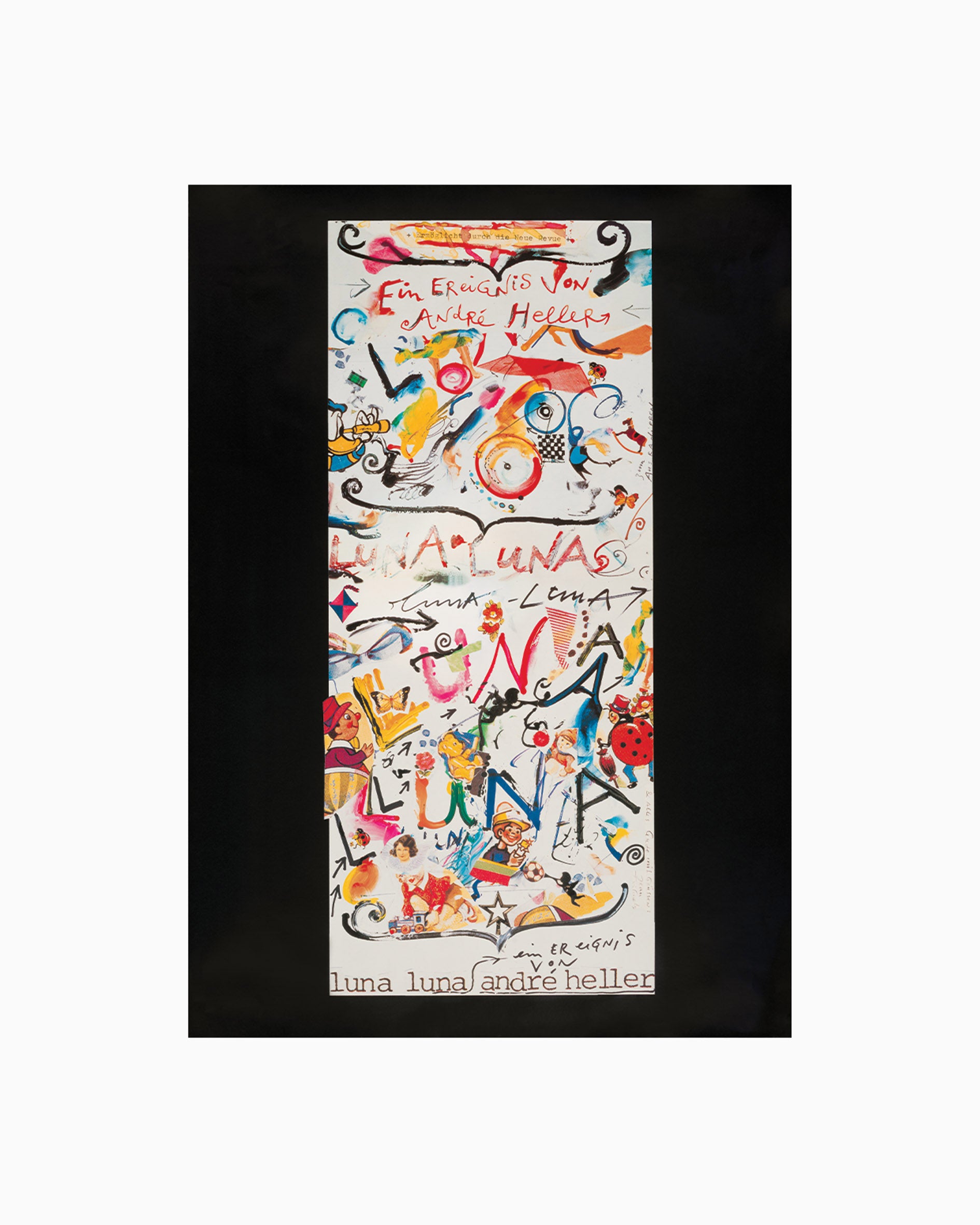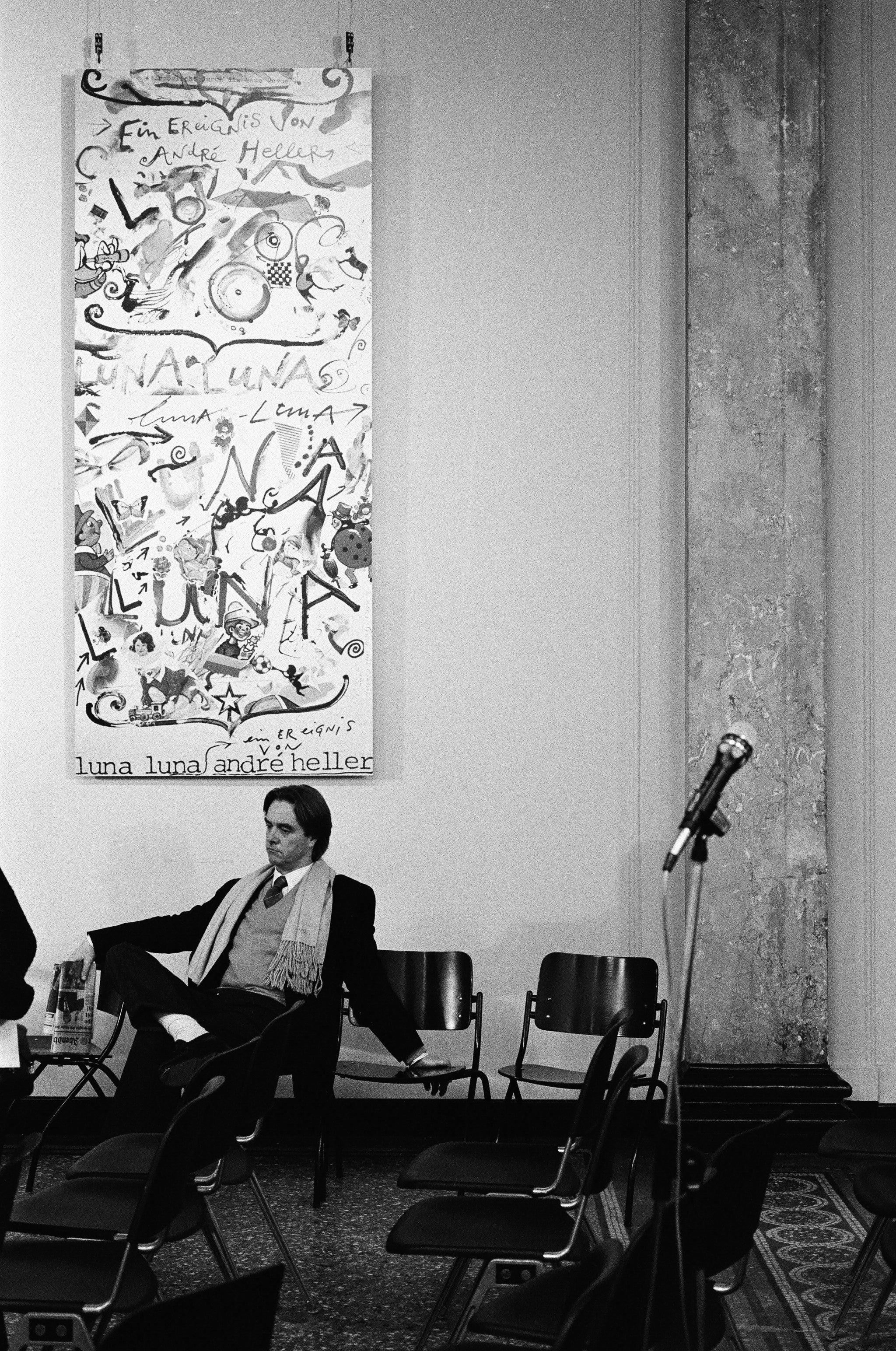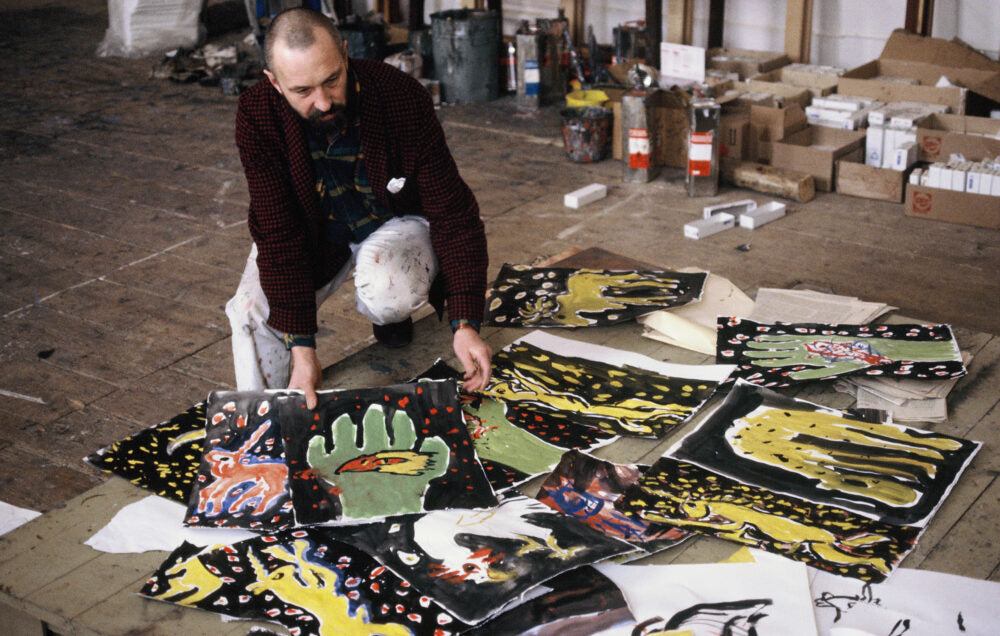
Georg Baselitz, Preparatory sketches for artworks exhibited in 1987.
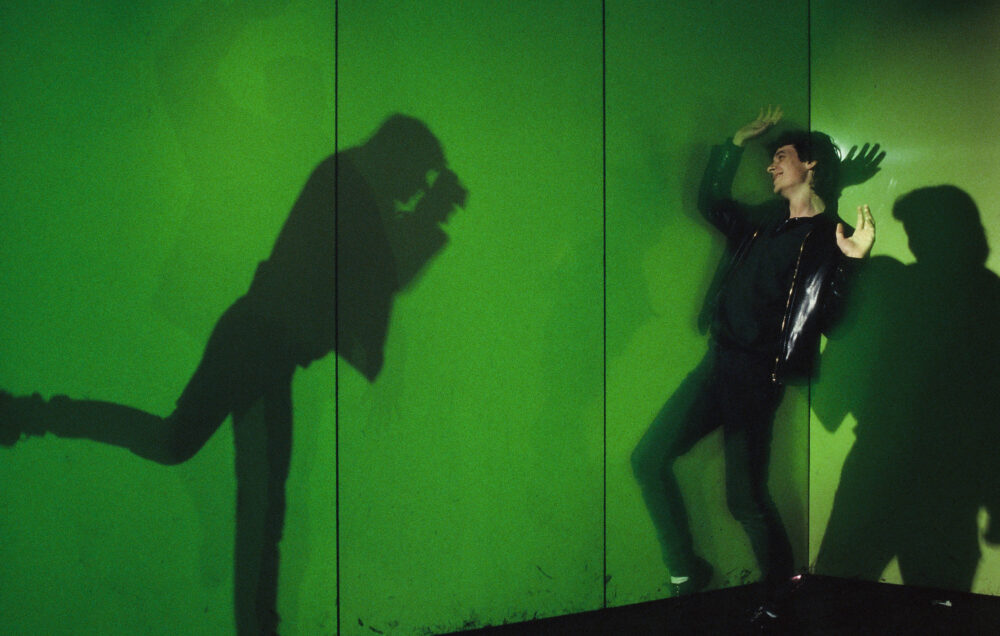
Hand-painted pavilion with exterior by Georg Baselitz, exhibited 1987.
German artist Georg Baselitz is a painter, sculptor, and printmaker. Growing up in the aftermath of World War II in East Germany influenced Baselitz’s interest in the concept of destruction, something he has grappled with repeatedly in his work. In the 1960s, he became known for expressive paintings of distorted figures that combined abstract gestures with cartoon-like naivety to convey raw emotion—partly inspired by an interest in art by mentally unwell people and the writings of avant-garde French writer Antonin Artaud.
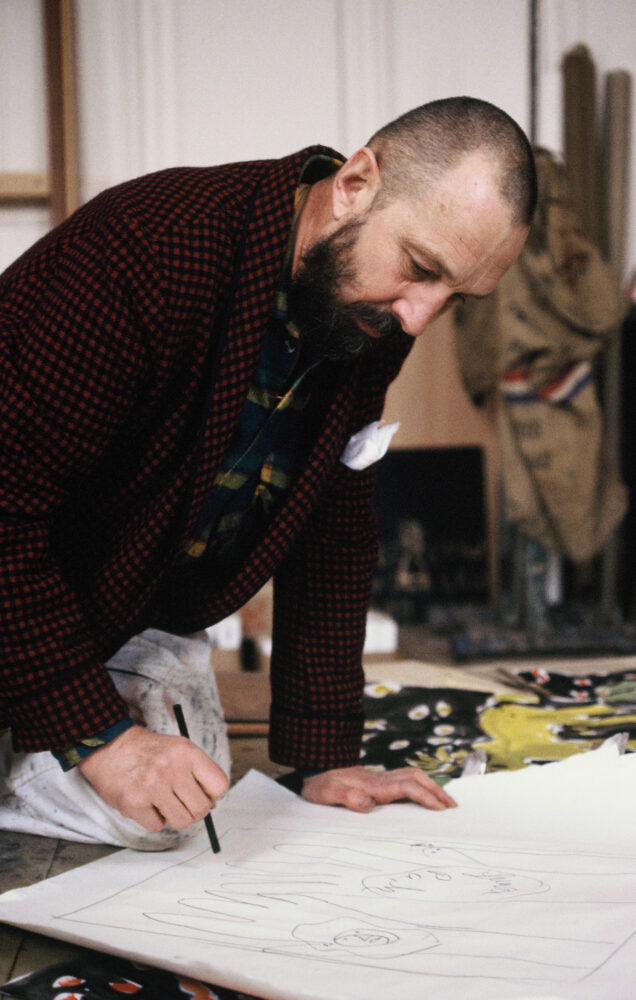
Georg Baselitz.

Fairground view: Georg Baselitz, Hand-painted pavilion. Luna Luna, Hamburg, Germany, 1987.
In 1969, he began painting his subjects upside-down in order to resist narrative and draw attention to the artifice of painting, emphasizing that what we see is not actually the true subject.
In 1963, at his first solo exhibition at Galerie Werner & Katz in Berlin, Baselitz sparked controversy when authorities confiscated his painting Die große Nacht im Eimer (“The Big Night Down the Drain”) (1962-63) which depicts a figure that is often described as a masturbating dwarf, and temporarily closed the exhibition on charges of public indecency. In 1969, he began painting his subjects upside-down in order to resist narrative and draw attention to the artifice of painting, emphasizing that what we see is not actually the true subject. This inversion has since become the defining feature of his work.
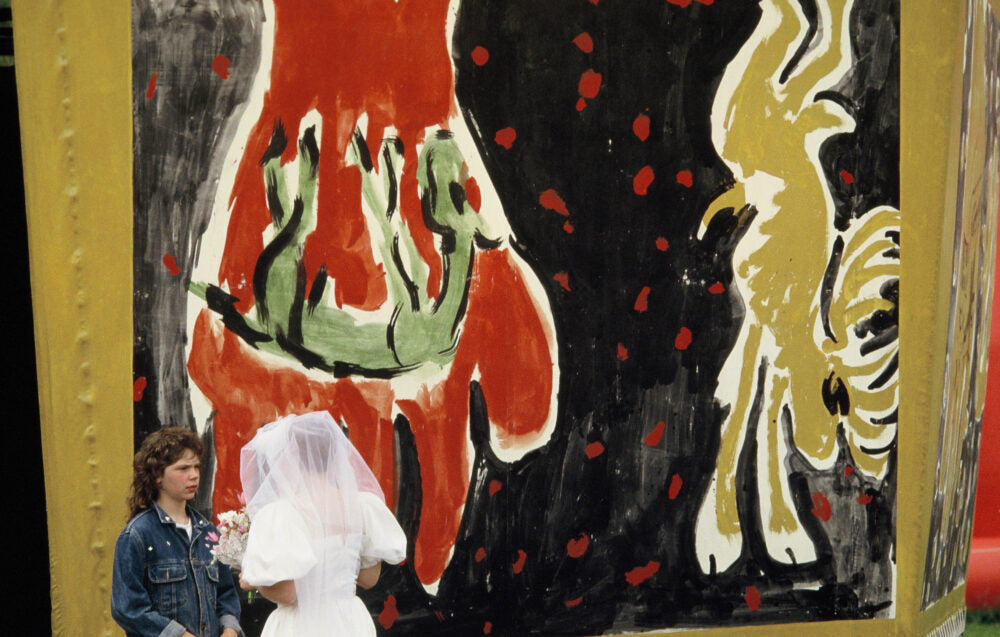
Fairground view: Georg Baselitz, Hand-painted pavilion. Luna Luna, Hamburg, Germany, 1987.
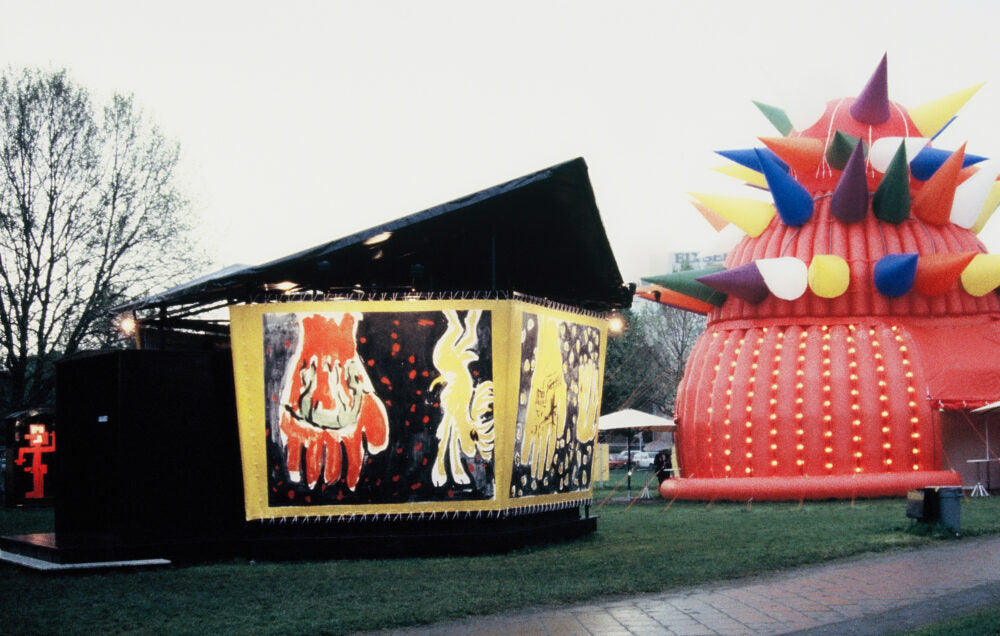
Fairground view: Georg Baselitz, Hand-painted pavilion. Luna Luna, Hamburg, Germany, 1987.

